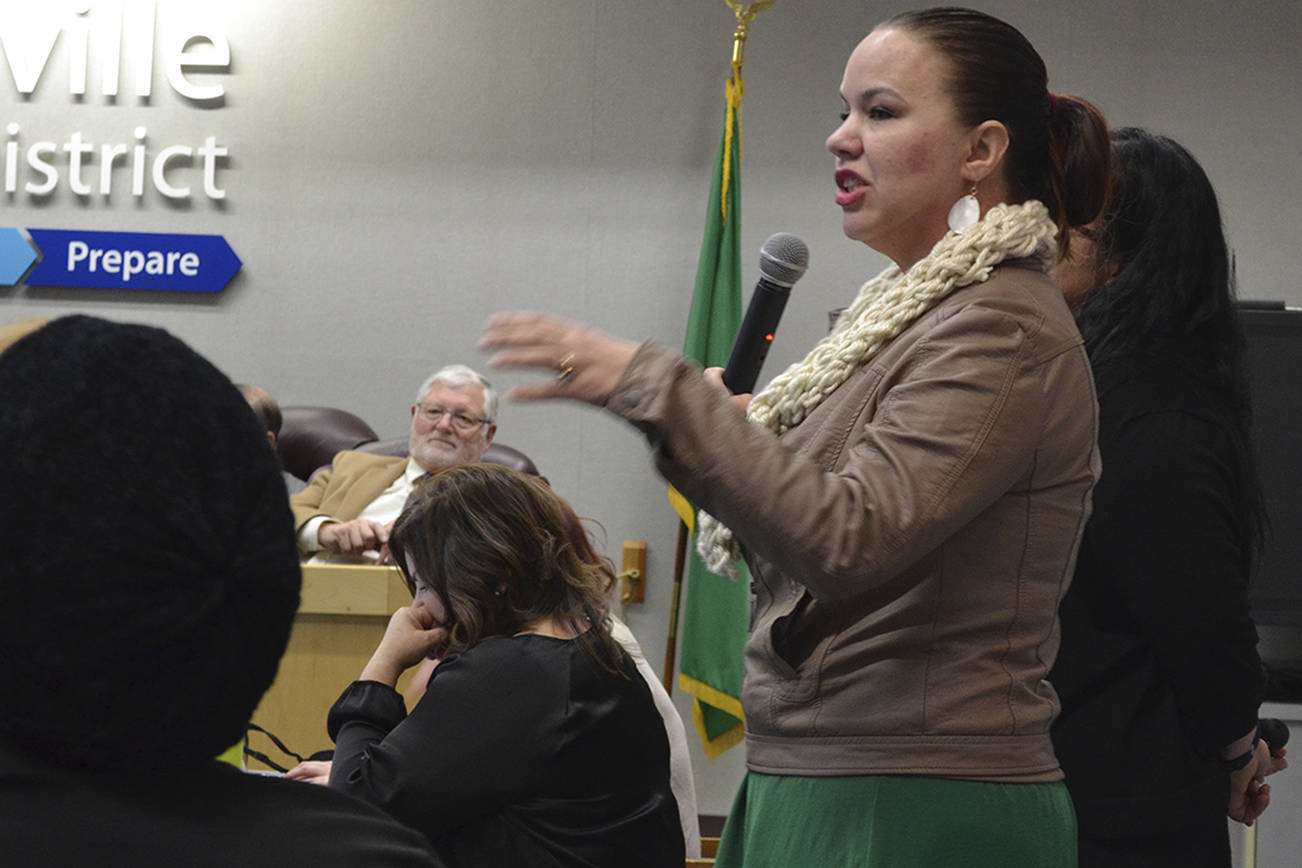MARYSVILLE – Teachers in the Marysville School District may notice that some of their Native American students are mostly silent in class.
Summer Hatch and Chrissy Dulik Dalos explained the reason why to the Marysville School Board Monday night.
About 100 years ago, the United States took many Native American children away from their parents and put them in boarding schools. One was on the Tulalip Reservation. Students were told to “hang it up outside,” referring to their culture, and listen. Generations later, “It’s the same feeling. It’s genetically in their bloodline,” Hatch said.
Dalos, the Indian Education manager with the district, said connections need to be made to get these students to open up.
“There is more coming together and more trust being built,” she said, adding more barriers still need to be broken down.
The district is working on it. There are 1,156 Native American students in the district. Some schools allow them to celebrate their culture with events such as powwows, potlatches, storytelling and drumming. Yet issues remain, such as 130 of those students don’t live with either parent. The safest some of them feel is at school, Hatch said.
There are support systems. Academically, about 300 students daily get help at the Tulalip Boys and Girls Club. There is also mental health support.
“That’s new, we don’t really talk about it,” Hatch said of the pressure kids are under. It’s always, “Rush, rush, rush, rush, rush.”
They also mentioned the high rate of heroin use that needs to be stopped now.
“Connection is the best antidote for addiction,” schools Superintendent Becky Berg said, paraphrasing what Dalos had said at an earlier meeting.
Also March 5, Principal Dawn Bechtholdt and some of her staff and students gave an update on both Arts and Tech and Mountain View high schools, which are in the same building on the Tulalip campus this year.
Bechtholdt said the schools are doing better academically, but some of that has to do with some students not qualifying to attend.
“We put the brakes on letting anybody come,” she said, referring to the state.
Two major goals were to get seniors on track to graduate, and make sure freshmen get off to a good start by not failing any classes. Much progress has been made in both areas.
On-time graduation is better than 70 percent.
And most of the freshmen passed more classes than they did in middle school. Bechtholdt said they might have done even better except, “Some wasted a lot of time in the transition” from middle school.
Schoolwide, she said students are “test phobic” but the second quarter “kids started to turn it on.”
As for attendance, more students started going to school in October. Bechtholdt said some kids start showing up then because they get bored at home when their friends aren’t around. There was a drop in December, however, because of a hard flu season.
The entire school is working on the 3 “Rs.” Not just reading, writing and arithmetic, but “Ready, Respectful and Responsible.” They also are working on their High School and Beyond Plans.



